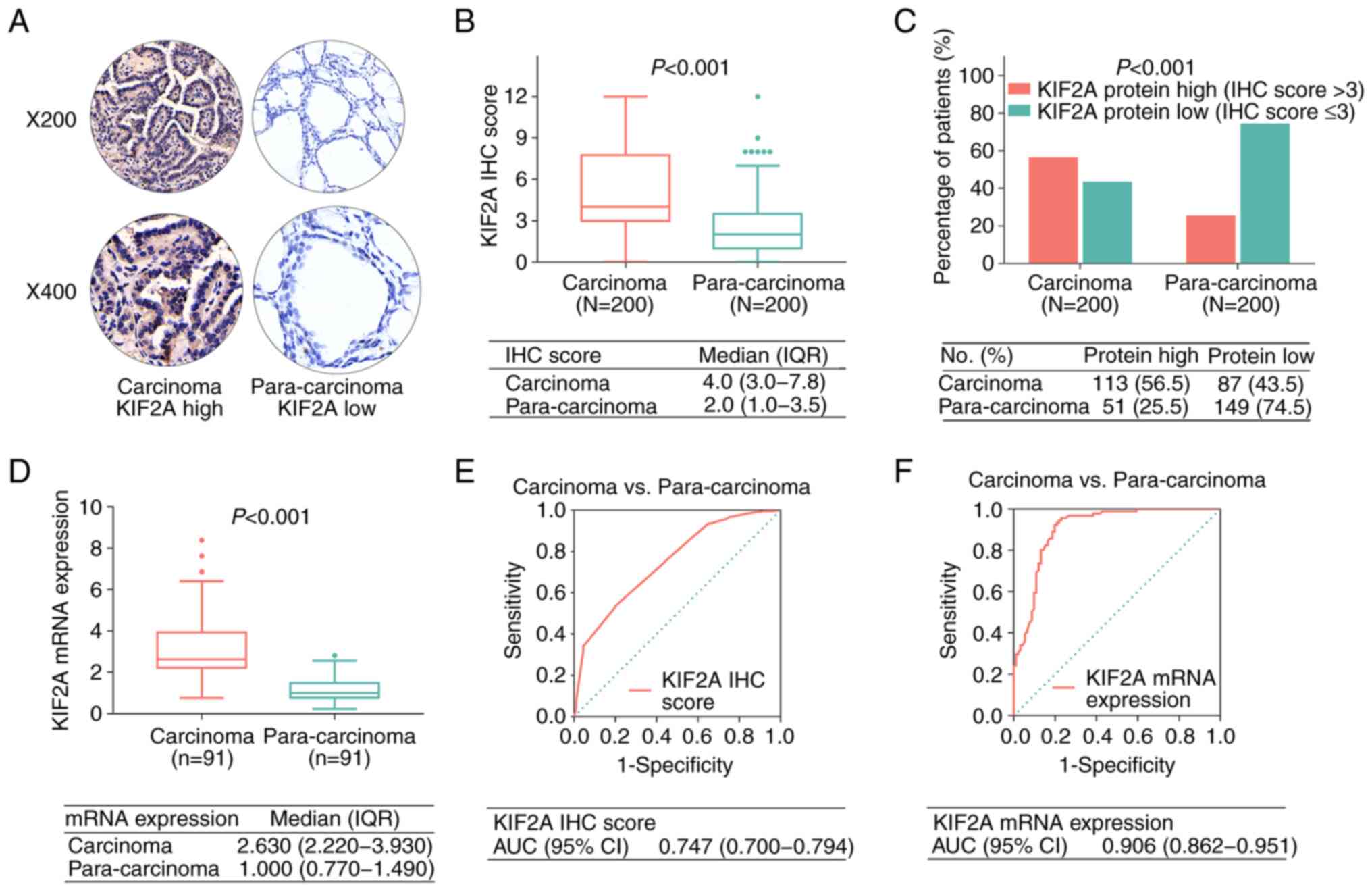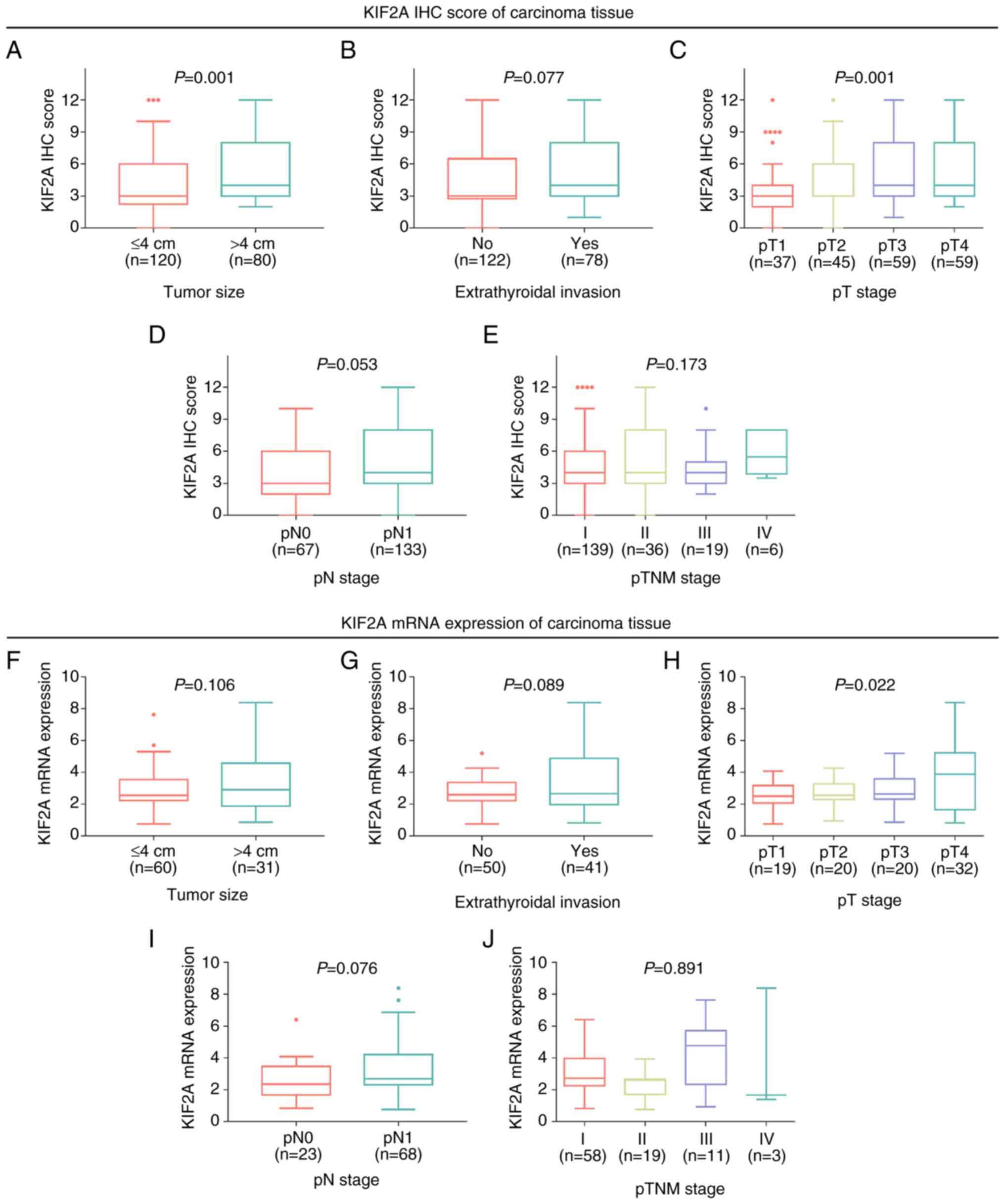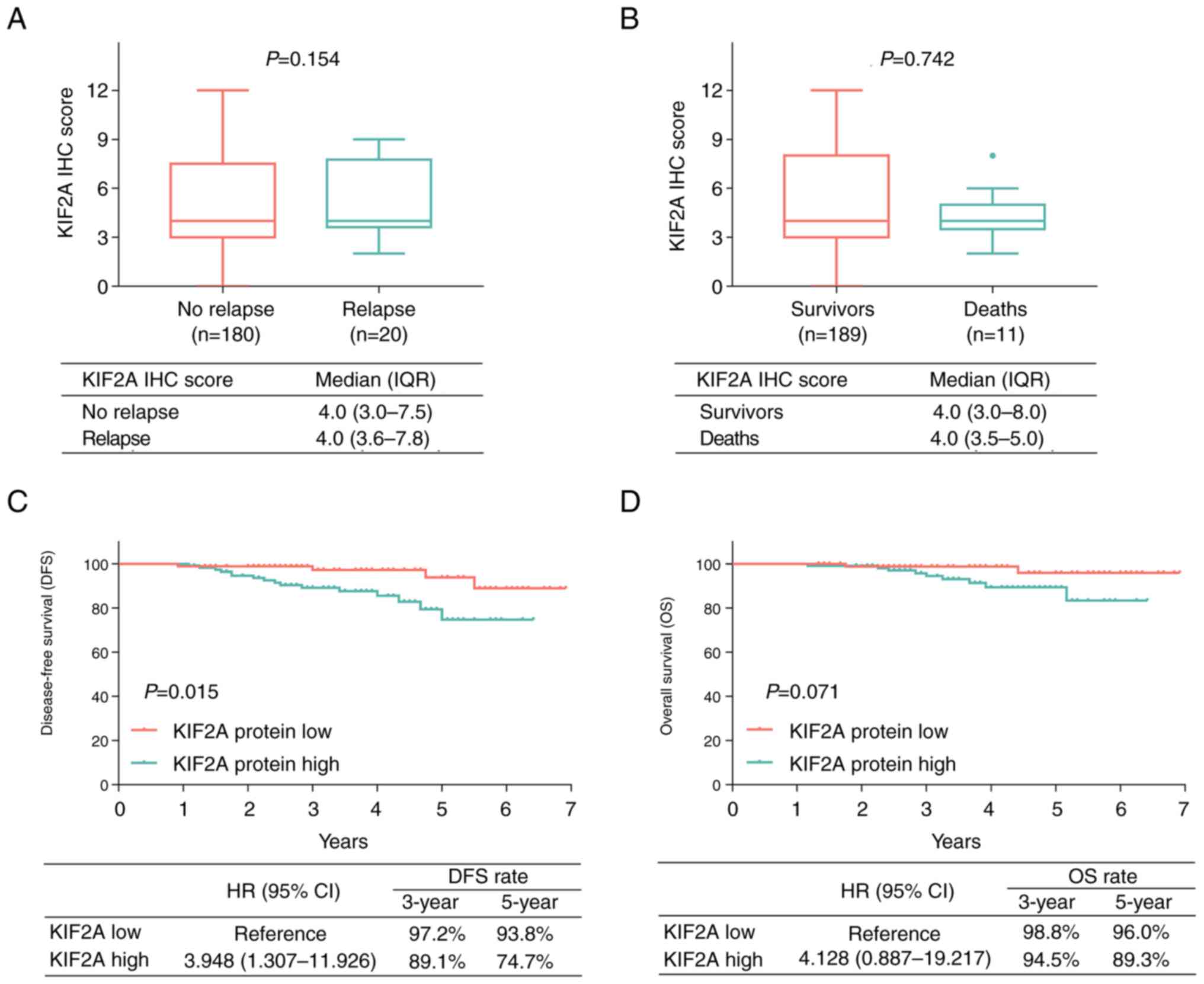|
1
|
Cabanillas ME, McFadden DG and Durante C:
Thyroid cancer. Lancet. 388:2783–2795. 2016. View Article : Google Scholar : PubMed/NCBI
|
|
2
|
Schlumberger M and Leboulleux S: Current
practice in patients with differentiated thyroid cancer. Nat Rev
Endocrinol. 17:176–188. 2021. View Article : Google Scholar : PubMed/NCBI
|
|
3
|
Lu Y, Jiang L, Chen C, Chen H and Yao Q:
Clinicopathologic characteristics and outcomes of papillary thyroid
carcinoma in younger patients. Medicine (Baltimore). 99:e197952020.
View Article : Google Scholar : PubMed/NCBI
|
|
4
|
Arianpoor A, Asadi M, Amini E, Ziaeemehr
A, Ahmadi Simab S and Zakavi SR: Investigating the prevalence of
risk factors of papillary thyroid carcinoma recurrence and
disease-free survival after thyroidectomy and central neck
dissection in Iranian patients. Acta Chir Belg. 120:173–178. 2020.
View Article : Google Scholar : PubMed/NCBI
|
|
5
|
Coca-Pelaz A, Shah JP, Hernandez-Prera JC,
Ghossein RA, Rodrigo JP, Hartl DM, Olsen KD, Shaha AR, Zafereo M,
Suarez C, et al: Papillary thyroid cancer-aggressive variants and
impact on management: A narrative review. Adv Ther. 37:3112–3128.
2020. View Article : Google Scholar : PubMed/NCBI
|
|
6
|
Abdullah MI, Junit SM, Ng KL, Jayapalan
JJ, Karikalan B and Hashim OH: Papillary thyroid cancer: Genetic
alterations and molecular biomarker investigations. Int J Med Sci.
16:450–460. 2019. View Article : Google Scholar : PubMed/NCBI
|
|
7
|
Mastronikolis N, Tsiambas E, Roukas D,
Fotiades P, Chrysovergis A, Papanikolaou V, Kyrodimos E,
Mastronikoli S, Niotis A and Ragos V: Micro-RNAs signatures in
papillary thyroid carcinoma. J BUON. 25:2144–2146. 2020.PubMed/NCBI
|
|
8
|
Ruiz EML, Niu T, Zerfaoui M,
Kunnimalaiyaan M, Friedlander PL, Abdel-Mageed AB and Kandil E: A
novel gene panel for prediction of lymph-node metastasis and
recurrence in patients with thyroid cancer. Surgery. 167:73–79.
2020. View Article : Google Scholar : PubMed/NCBI
|
|
9
|
Drummond DR: Regulation of microtubule
dynamics by kinesins. Semin Cell Dev Biol. 22:927–934. 2011.
View Article : Google Scholar : PubMed/NCBI
|
|
10
|
Yi ZY, Ma XS, Liang QX, Zhang T, Xu ZY,
Meng TG, Ouyang YC, Hou Y, Schatten H, Sun QY and Quan S: Kif2a
regulates spindle organization and cell cycle progression in
meiotic oocytes. Sci Rep. 6:385742016. View Article : Google Scholar : PubMed/NCBI
|
|
11
|
Ali A, Veeranki SN, Chinchole A and Tyagi
S: MLL/WDR5 complex regulates Kif2A localization to ensure
chromosome congression and proper spindle assembly during mitosis.
Dev Cell. 41:605–622.e7. 2017. View Article : Google Scholar : PubMed/NCBI
|
|
12
|
Bufe A, Garcia Del Arco A, Hennecke M, de
Jaime-Soguero A, Ostermaier M, Lin YC, Ciprianidis A, Hattemer J,
Engel U, Beli P, et al: Wnt signaling recruits KIF2A to the spindle
to ensure chromosome congression and alignment during mitosis. Proc
Natl Acad Sci USA. 118:e21081451182021. View Article : Google Scholar : PubMed/NCBI
|
|
13
|
Wang K, Lin C, Wang C, Shao Q, Gao W, Song
B, Wang L, Song X, Qu X and Wei F: Silencing Kif2a induces
apoptosis in squamous cell carcinoma of the oral tongue through
inhibition of the PI3K/Akt signaling pathway. Mol Med Rep.
9:273–278. 2014. View Article : Google Scholar : PubMed/NCBI
|
|
14
|
Zhang Q, Lu D, Liu W, Ye S, Guo H, Liao T
and Chen C: Effects of KIF2A on the prognosis of nasopharyngeal
carcinoma and nasopharyngeal carcinoma cells. Oncol Lett.
18:2718–2723. 2019.PubMed/NCBI
|
|
15
|
Zhang X, Wang Y, Liu X, Zhao A, Yang Z,
Kong F, Sun L, Yu Y and Jiang L: KIF2A promotes the progression via
AKT signaling pathway and is upregulated by transcription factor
ETV4 in human gastric cancer. Biomed Pharmacother. 125:1098402020.
View Article : Google Scholar : PubMed/NCBI
|
|
16
|
Fan X, Wang X, Zhu H, Wang W, Zhang S and
Wang Z: KIF2A overexpression and its association with
clinicopathologic characteristics and unfavorable prognosis in
colorectal cancer. Tumour Biol. 36:8895–8902. 2015. View Article : Google Scholar : PubMed/NCBI
|
|
17
|
Zhang Q, Zhang W, Zhang J, Xu H and You Y:
Aberrant Kif2a and Ki67 expression predicts poor survival in
laryngeal squamous cell carcinoma. Auris Nasus Larynx. 43:433–439.
2016. View Article : Google Scholar : PubMed/NCBI
|
|
18
|
Wang ZX, Ren SC, Chang ZS and Ren J:
Identification of kinesin family member 2A (KIF2A) as a promising
therapeutic target for osteosarcoma. Biomed Res Int.
2020:71027572020.PubMed/NCBI
|
|
19
|
Fu H, Jin C, Zhu Q, Liu T, Ke B, Li A and
Zhang T: Dysregulated expressions of PTEN, NF-κB, WWP2, p53 and
c-Myc in different subtypes of B cell lymphoma and reactive
follicular hyperplasia. Am J Transl Res. 11:1092–1101.
2019.PubMed/NCBI
|
|
20
|
Livak KJ and Schmittgen TD: Analysis of
relative gene expression data using real-time quantitative PCR and
the 2(−Delta Delta C(T)) method. Methods. 25:402–408. 2001.
View Article : Google Scholar : PubMed/NCBI
|
|
21
|
Li D, Sun H, Meng L and Li D: The
overexpression of kinesin superfamily protein 2A (KIF2A) was
associated with the proliferation and prognosis of esophageal
squamous cell carcinoma. Cancer Manag Res. 12:3731–3739. 2020.
View Article : Google Scholar : PubMed/NCBI
|
|
22
|
Li H, Han D, Hou Y, Chen H and Chen Z:
Statistical inference methods for two crossing survival curves: A
comparison of methods. PLoS One. 10:e01167742015. View Article : Google Scholar : PubMed/NCBI
|
|
23
|
Xu L, Zhang X, Wang Z, Zhao X, Zhao L and
Hu Y: Kinesin family member 2A promotes cancer cell viability,
mobility, stemness, and chemoresistance to cisplatin by activating
the PI3K/AKT/VEGF signaling pathway in non-small cell lung cancer.
Am J Transl Res. 13:2060–2076. 2021.PubMed/NCBI
|
|
24
|
Liang X and Xia R: Kinesin family member
2A acts as a potential prognostic marker and treatment target via
interaction with PI3K/AKT and RhoA/ROCK pathways in acute myeloid
leukemia. Oncol Rep. 47:182022. View Article : Google Scholar : PubMed/NCBI
|
|
25
|
Sheng N, Xu YZ, Xi QH, Jiang HY, Wang CY,
Zhang Y and Ye Q: Overexpression of KIF2A is suppressed by miR-206
and associated with poor prognosis in ovarian cancer. Cell Physiol
Biochem. 50:810–822. 2018. View Article : Google Scholar : PubMed/NCBI
|
|
26
|
Zhang S, Huang F, Wang Y, Song Q, Yang X
and Wu H: KIF2A overexpression and its association with
clinicopathologic characteristics and poor prognoses in patients
with gastric cancer. Dis Markers. 2016:74845162016. View Article : Google Scholar : PubMed/NCBI
|

















